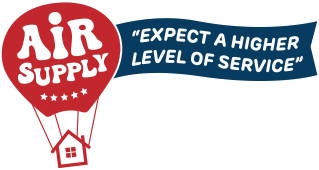Understanding how your furnace works can be a great tool in this day and age. We have the power of the internet at our fingertips and a simple search on your favorite search engine can yield some pretty amazing results to the burning questions you have. We have the ability to learn the inner workings of things in a split second. Years ago, things weren’t always that simple. By understanding the way things work, you can identify and diagnose common issues to determine whether you can fix an issue yourself, or if hiring a professional is needed. Being educated on the basic maintenance required to keep your furnace in good working order will ensure you won’t get stuck with unnecessary repair bills mid-season and extend the life of your unit. HVAC systems are an investment and are not cheap. Here in the Valley, we experience sweltering highs in the summer, and freezing lows in the winter, making our HVAC systems a vital part of living and surviving here in Las Vegas. Depending on whether your home is run solely on electricity or whether your home runs on both natural gas and electricity will determine the type of furnace you have in your home. Today, Air Supply Heating & Air Conditioning will explain just how a gas furnace works.
Parts of a Gas Furnace
Thermostat– This little device is typically located in the center of the home and acts as an informant to the furnace, sending off a signal to a control board inside the furnace telling it to turn on the ignition switch when the home reaches a temperature outside of the set comfort zone.
Draft hood– Also known as a draft converter, these are located above the upper most part of the gas furnace. The first purpose of the draft hood is to neutralize up drafts and down drafts that pass through the flue pipe located inside your chimney. This regulates the amount of pressure within the burner, which must maintain a specific pressure at all times in order to run safely and efficiently. Secondly, it adds dilution air to the combustion gasses being pushed out of the flue in your chimney to minimize the build-up of condensation inside your chimney. Too much moisture would cause the flue to corrode. Lastly, it will reroute the direction of the gasses in the event of a blockage within the chimney to stop what’s called a flame rollout.
Burners– The burners mix a controlled amount of fuel and air and begins to burn it in order to create the heat that is then sent off to be forced through the home. The gas valves, igniter and flame sensor all work in unison to control the flames within the furnace. When the furnace sends a signal for more heat, the gas valves open and a flame ignites. The flame sensor is a safety mechanism that will shut the gas valves off in the event a flame isn’t ignited.
Heat exchanger– This is where the magic happens. These metal tubes or coils are heated by the burners. This is the part of your furnace that actually heats the air delivered throughout your home.
Blower– The blower blows the heat made by the heat exchanger and forces it through the ductwork in your home so warm air can be delivered to each room. It also draws in cooler air returned by the return ducts to be reheated by the heat exchanger and redelivered throughout the home.
Furnace Heating Repair & More in Summerlin, North LV, Henderson, Enterprise, Paradise, Sunrise Manor, Spring Valley, Aliante, Anthem, Desert Shores, Eldorado, Green Valley Ranch, Inspirada, Mountain’s Edge, Peccole Ranch, Providence, Rhodes Ranch, Seven Hills, Silverado Ranch, The Lakes, Tuscany Village & Las Vegas Nevada
Each home is different and requires a unique plan of action to maintain its gas furnace, so it runs at the highest efficiency possible. Scheduling yearly maintenance for your gas furnace by a licensed and experienced HVAC company like Air Supply Heating & Air Conditioning will prolong the life of the gas furnace and save you from unnecessary repair bills. Keeping your filters changed as often as they become dirty is paramount in ensuring proper air flow to the furnace. Lack of proper air flow will eventually harm the furnace and result in costly repair bills down the road. If you have further questions about your gas furnace, give us a call, we’d be glad to help!

